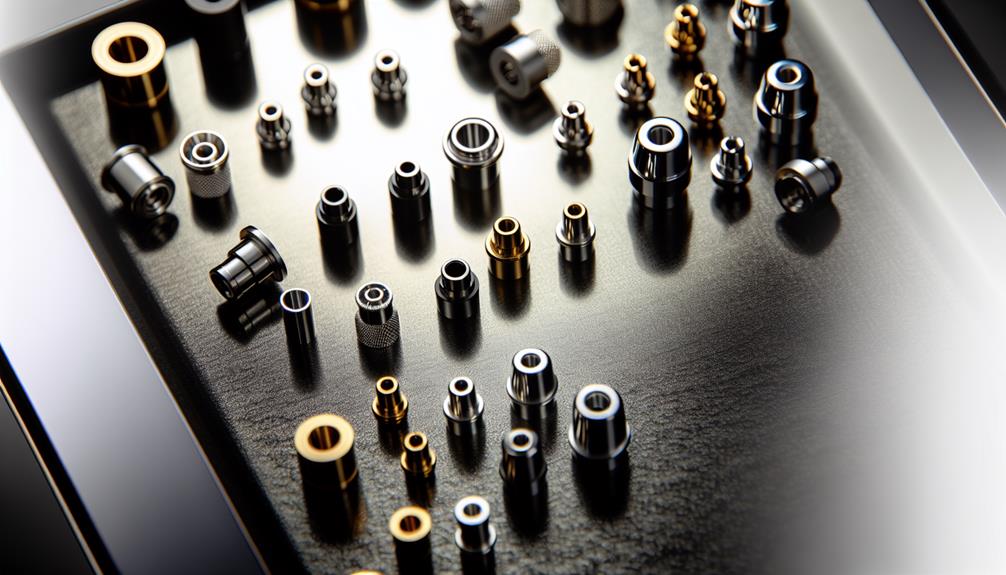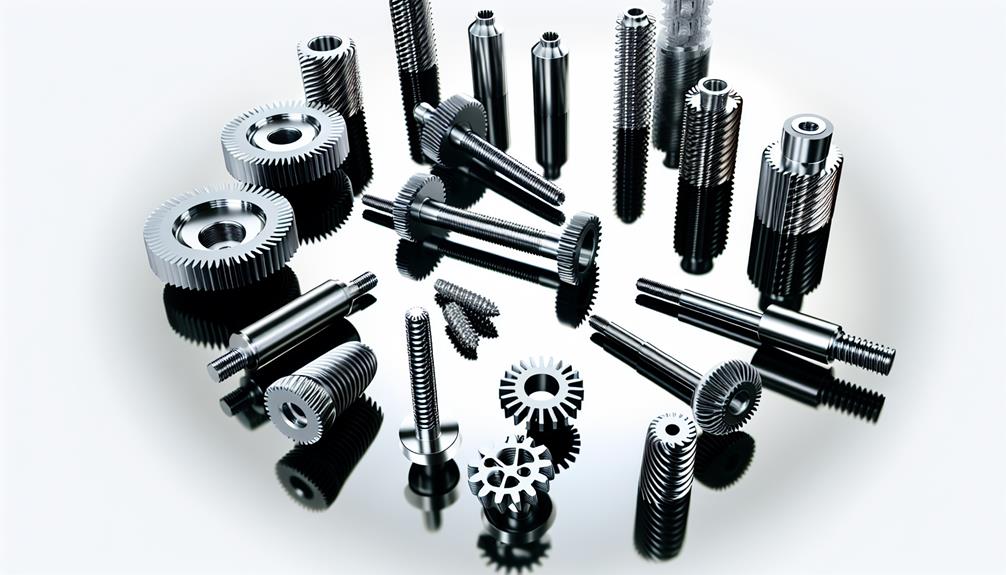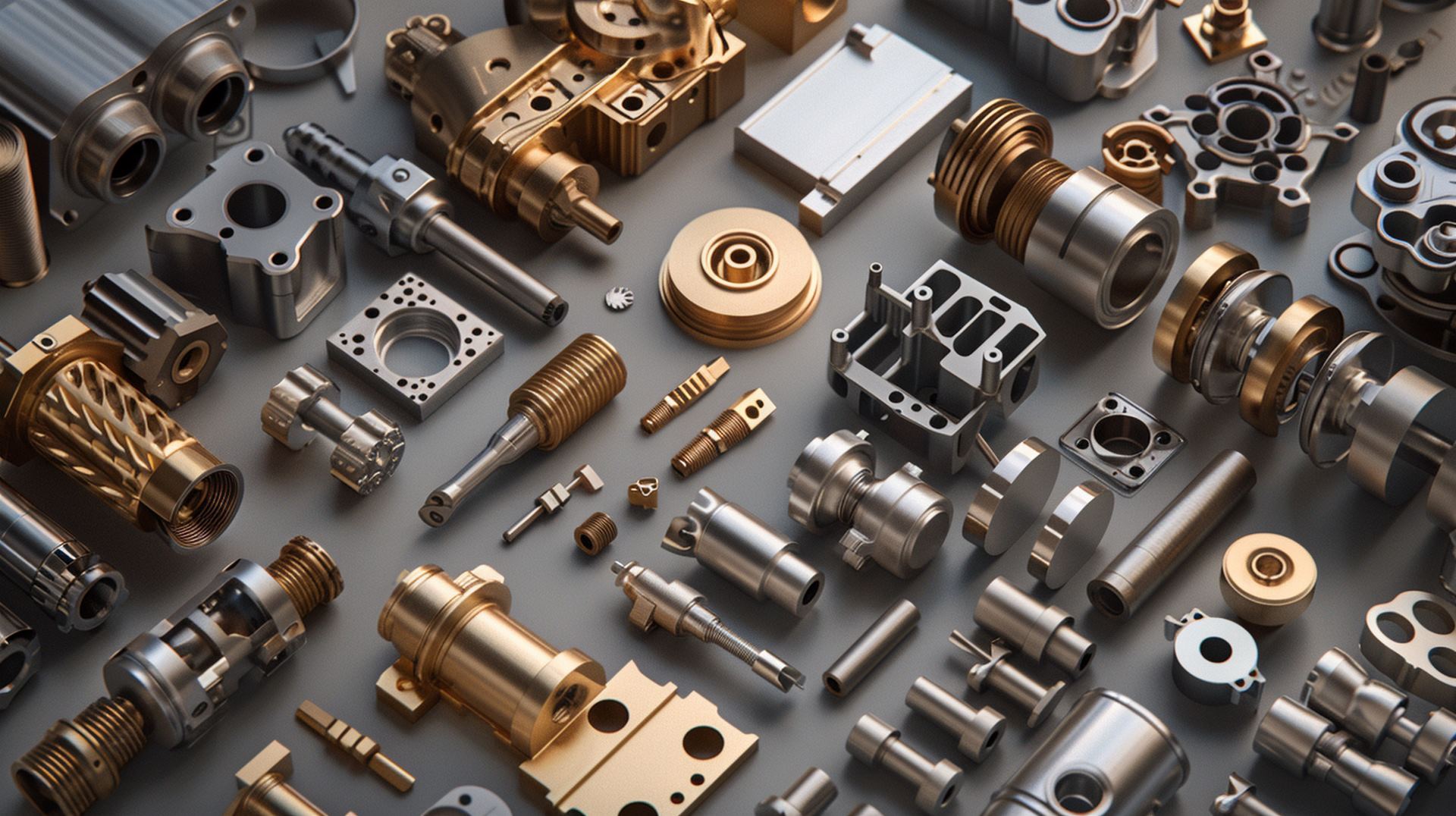Crafting Flat Head Hexagon Socket Head Screws
Crafting flat head hexagon socket head screws requires meticulous attention to detail and precision at every stage of the manufacturing process. From the careful selection of materials to the intricate screw shaping process, each step plays a crucial role in producing high-quality fasteners.
As these screws hold significant importance in various industries, understanding the nuances of socket head creation and the application of specific finishing techniques is paramount. Furthermore, stringent quality control measures and rigorous testing procedures ensure that each screw meets the strict standards set forth by manufacturers.
The complexities involved in crafting these essential components hint at a fascinating journey into the world of precision engineering and mechanical design.
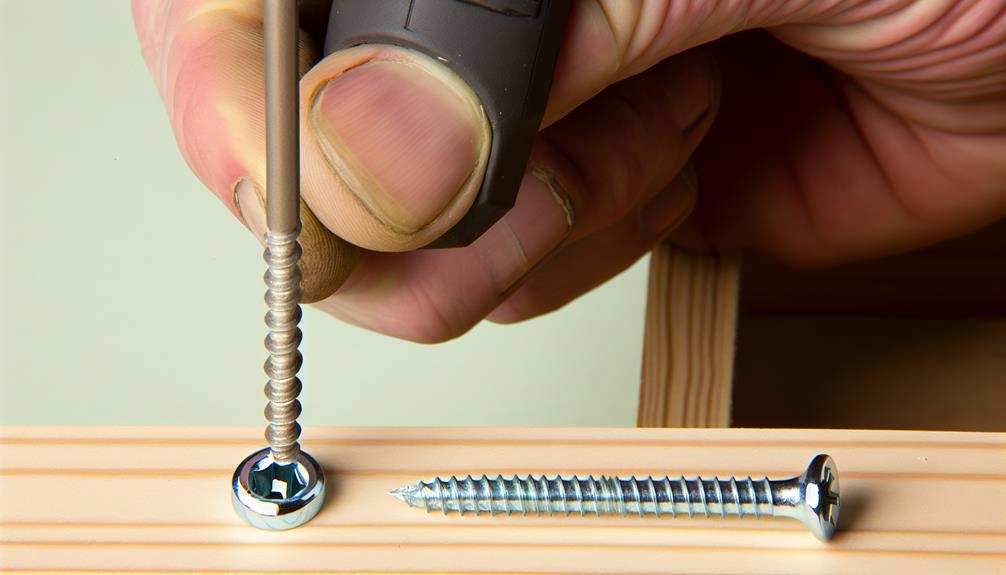
Key Takeaways
- Material selection and treatment are critical for durability and performance
- Screw shaping process through forging ensures strength and integrity
- Meticulous attention to socket head design is essential for secure fit and torque transmission
- Finishing techniques and surface treatments enhance durability and prevent corrosion
Materials Selection
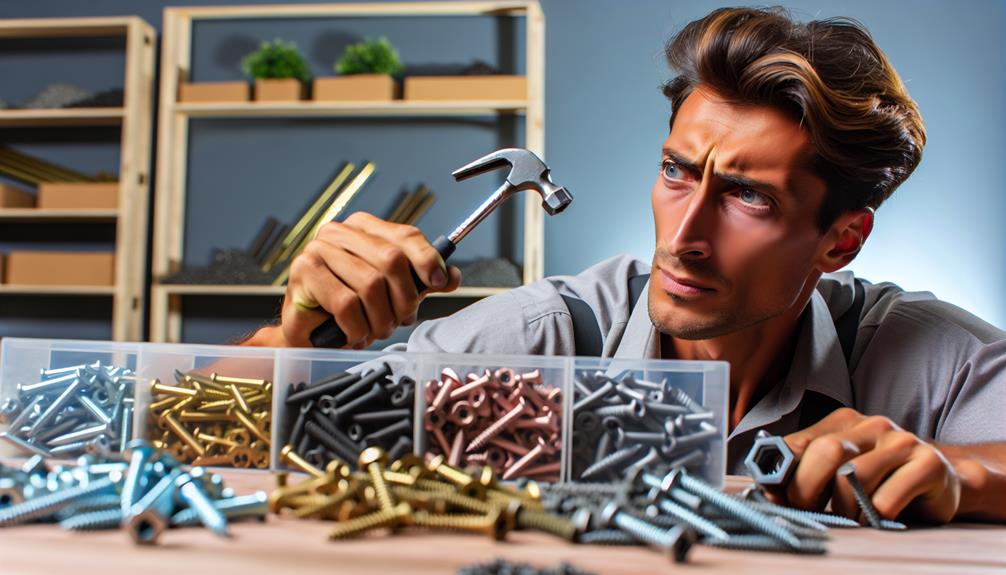
In the process of crafting flat head hexagon socket head screws, the selection of materials plays a critical role in ensuring the durability and performance of the final product. Key factors to consider in material selection include the type of steel used, heat treatment processes, and surface coatings applied.
Heat treatment is a crucial step in enhancing the mechanical properties of the screws. Through processes like annealing, quenching, and tempering, the material's hardness, strength, and toughness can be optimized to meet specific performance requirements. Selecting the appropriate heat treatment method is essential to achieve the desired balance of properties in the screws.
Furthermore, surface coatings are applied to improve the screws' corrosion resistance, lubricity, and appearance. Coatings like zinc plating, nickel plating, or black oxide can provide protection against environmental factors and reduce friction during assembly. The choice of surface coating depends on the intended application and the level of protection required for the screws.
Careful consideration of both heat treatment and surface coatings is paramount in ensuring the quality and longevity of flat head hexagon socket head screws.
Screw Shaping Process
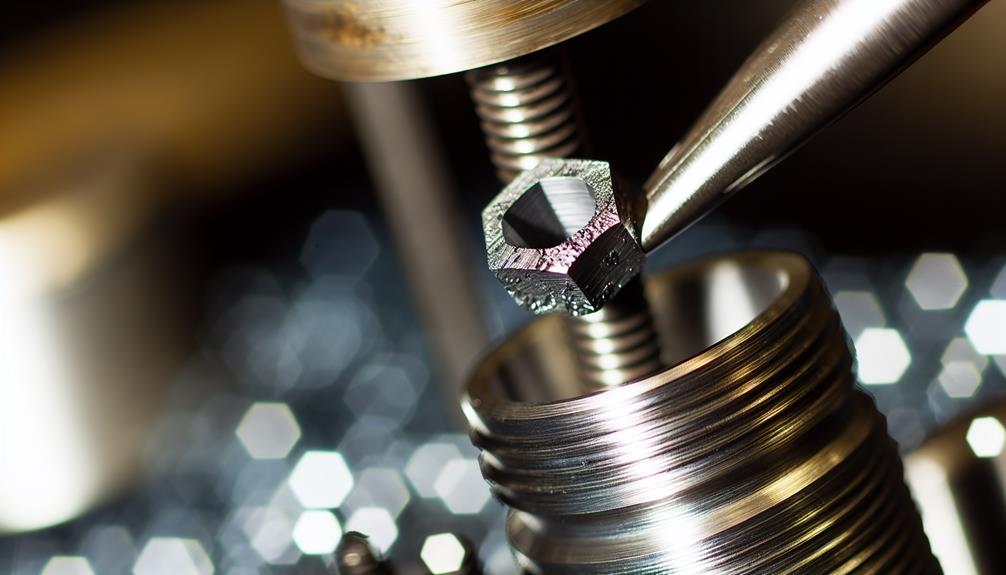
With the selection of materials optimized through heat treatment and surface coatings, the focus now shifts to the crucial aspect of the screw shaping process in crafting flat head hexagon socket head screws.
The forging process is a fundamental step in shaping the screws. During forging, the material is heated and then shaped using compressive forces to form the desired dimensions and features of the screw head and body. This process ensures the strength and integrity of the screws, making them suitable for demanding applications.
Additionally, screw threading is a key component of the screw shaping process. Thread rolling or cutting is typically employed to create the precise helical ridges on the screw shaft, allowing it to securely fasten components together. The accuracy and quality of the screw threads are essential to ensure proper engagement and effective fastening.
Socket Head Creation
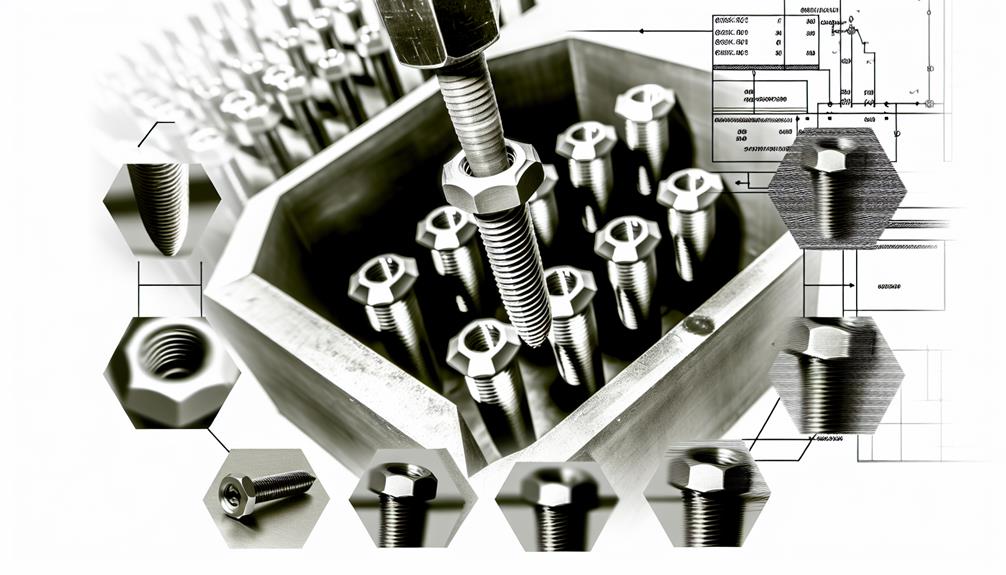
Crafting precision-crafted flat head hexagon socket head screws involves meticulous attention to detail during the socket head creation process. The socket head design is crucial in ensuring a secure fit and efficient torque transmission. To create the hexagon shape of the socket head, advanced machining techniques are employed. Precision tools carve out the hexagonal socket, which is essential for engaging with hex keys during installation and removal.
Manufacturers adhere to strict tolerances to guarantee the socket head's precise dimensions, allowing for seamless interaction with corresponding tools. The socket head creation process demands precision engineering to achieve the desired shape and depth. Quality control measures are implemented to verify the accuracy of each socket head, ensuring uniformity across all screws produced.
Finishing Techniques
How can finishing techniques enhance the appearance and durability of flat head hexagon socket head screws? Finishing techniques play a crucial role in not only improving the aesthetics but also the longevity of these essential components. By utilizing polishing techniques and surface treatments, manufacturers can achieve a level of quality that meets the highest standards.
Key Finishing Techniques:
- Polishing Techniques: Implementing polishing techniques such as mechanical or chemical polishing can help smoothen the surface of flat head hexagon socket head screws. This process removes any imperfections and enhances the overall shine of the screws, providing a more professional look.
- Surface Treatments: Applying surface treatments like coatings or plating can significantly increase the durability of the screws. These treatments create a protective layer that helps prevent corrosion, wear, and tear, ensuring the screws maintain their functionality over an extended period.
- Quality Control Measures: Incorporating stringent quality control measures during the finishing process is essential to guarantee that each screw meets the desired standards. This includes thorough inspections for consistency, uniformity, and adherence to specifications before the screws are ready for distribution.
Quality Control and Testing
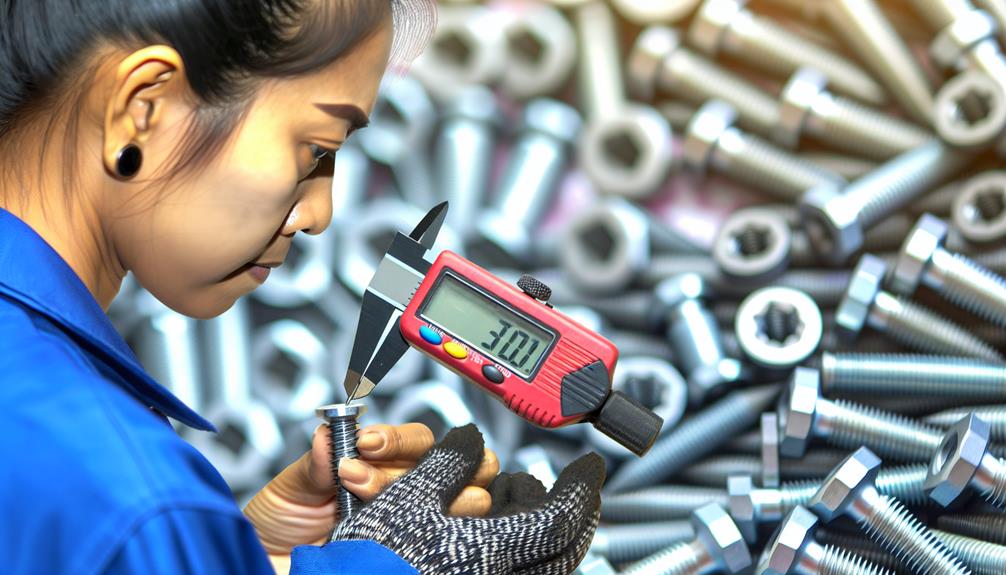
After implementing key finishing techniques such as polishing and surface treatments to enhance the appearance and durability of flat head hexagon socket head screws, the focus shifts to quality control and testing measures to ensure the highest standards are met.
Quality assurance is paramount in the production of these screws to guarantee their reliability and longevity in various applications.
Durability testing plays a crucial role in quality control, where screws undergo rigorous assessments to evaluate their strength and resilience under different conditions. These tests involve subjecting the screws to mechanical stress, corrosion resistance trials, and temperature fluctuations to simulate real-world usage scenarios.
By conducting thorough durability testing, manufacturers can identify any potential weaknesses in the screws' design or materials, enabling them to make necessary improvements before the products reach the market.
In essence, quality control and durability testing are integral components of the manufacturing process for flat head hexagon socket head screws, ensuring that each piece meets the required standards for performance and longevity.
Frequently Asked Questions
What Are the Typical Applications for Flat Head Hexagon Socket Head Screws?
Flat head hexagon socket head screws find common applications in industries such as furniture assembly, automotive, and electronics. These screws are compatible with various materials like metal, wood, and plastic, providing secure fastening solutions for precision work.
Is It Possible to Customize the Size and Dimensions of Flat Head Hexagon Socket Head Screws?
Customization options for flat head hexagon socket head screws offer size flexibility, enabling tailored solutions to meet specific needs. Manufacturers can adjust dimensions to precise requirements, ensuring optimal performance and compatibility for various applications.
Can Flat Head Hexagon Socket Head Screws Be Used in High-Temperature or Corrosive Environments?
In high-temperature or corrosive environments, ensuring material compatibility and temperature resistance is paramount for flat head hexagon socket head screws. Careful selection of appropriate materials and coatings is essential to maintain structural integrity and prevent failure.
What Are the Advantages of Using Flat Head Hexagon Socket Head Screws Over Other Types of Screws?
The advantages of flat head hexagon socket head screws over other types include their flush finish, improved access in tight spaces, and resistance to tampering. Proper installation techniques ensure secure fastening and efficient assembly processes.
Are There Any Special Tools Required for Installing Flat Head Hexagon Socket Head Screws?
When installing flat head hexagon socket head screws, specialized tools like hex keys or Allen wrenches are needed. Proper installation techniques include aligning the screw with the socket head, applying consistent pressure, and using the appropriate tool for a secure fit.
Mikehardware-your trusted Custom Screw manufacturer
In conclusion, the crafting of flat head hexagon socket head screws involves meticulous material selection, precise screw shaping processes, socket head creation, finishing techniques, and rigorous quality control.
Each step in the manufacturing process is crucial to ensure the durability and functionality of the final product.
As the saying goes, 'A well-crafted screw is the foundation of a sturdy structure,' emphasizing the importance of attention to detail in producing high-quality screws.
At Dongguan Mike Hardware Co., Ltd., precision engineering meets innovation, delivering impeccable CNC product manufacturing solutions. Explore our array of customized fasteners, screws, and coatings, ensuring your projects excel in performance, precision, and quality.

